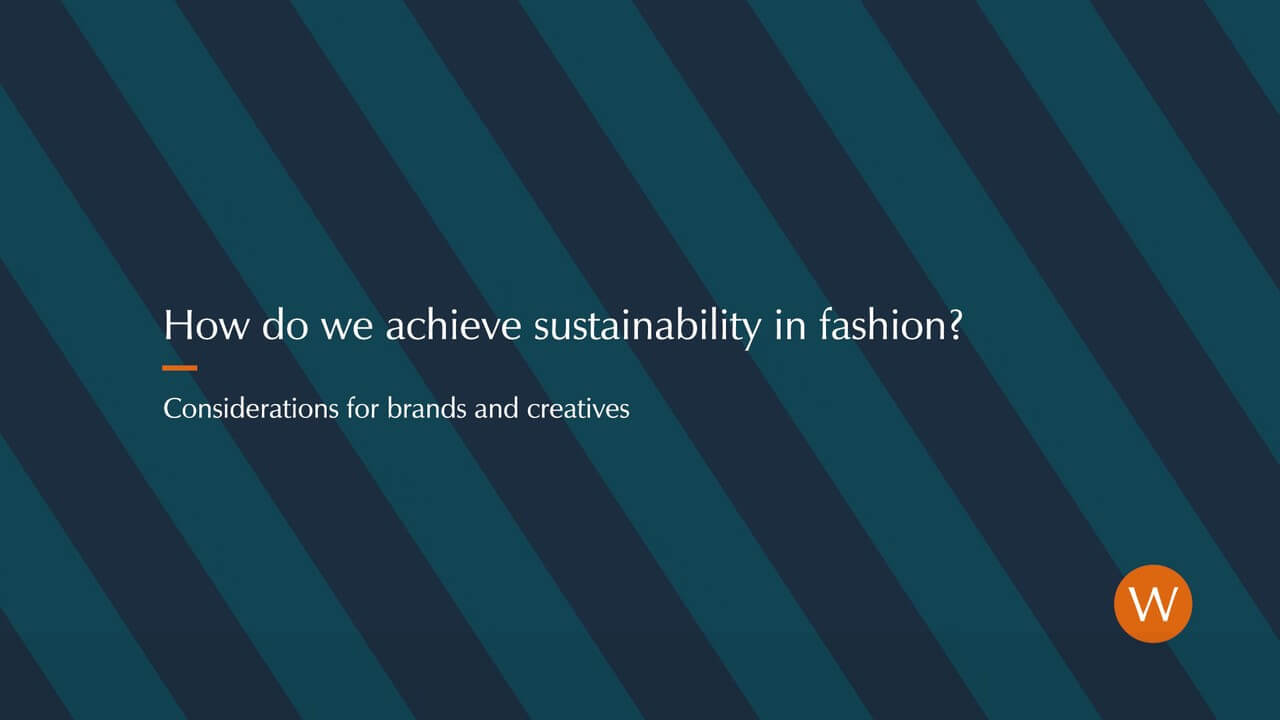Fashion brands are taking a hard look at their environmental impact and measures to address their sustainability. With consumer demand driving new levels of action and honesty, Withers partners Deborah Greaves and Graham Webster, alongside Lauren Choi, founder and CEO of The New Norm, discuss some of the most pressing issues for brands.

Note: We have provided a transcript of the video if you are unable to listen to the audio. This transcript is generated using a combination of speech recognition software and human transcribers and may contain errors.
Deborah Greaves (0:09): We know that the fashion industry has been accused of being one of the most wasteful industries. Sustainability includes environmental matters, social compliance, circularity, traceability, chemicals, safety... Sustainability also, if you look at the true source of the word, includes not only sustainability from the perspective of the planet and being a good steward, but also sustainability of the company itself. How do you ensure that your practices are sustainable in the long termso that the company can survive and be competitive and provide the products that the consumers expect.
Graham Webster (0:54): I think this is such a huge topic that it's important not to speak in broad generalizations. I think even fashion consumers and sustainably conscious consumers are struggling to make sense of all the data which is out there. And I think that brands which have a greater consciousness about their operation and going through a real evaluation of their core proposition so that they can speak honestly and transparently around the issues are going to make headway in the current market.
Lauren Choi (1:18): We are really trying to tackle kind of four major environmental issues. One, pollution. I think one connection that many consumers don't make is anytime you wear a synthetic material, so a polyester, a nylon that was derived from oil and gas ultimately and so by incorporating more recycled materials, we can really start to cut the industry's reliance on that. The second kind of major thing is water pollution. Through dyeing and chemical use and finishing, the fashion industry pollutes all of our waterways and since globally those waterways are connected you could be across the world and still be impacted by the pollution being added into the water. The third thing is microfiber shedding, and so microfibers coming off of various different types of natural or synthetic fibers have now been found in our waterways, but it's also been found in human blood. The last thing is our supply chain. So we are fully made in the United States everything from plastic recycling to yarn to fabric is really done in a very small local radius, which not only supports the local recycling and textile industry in the United States, but it also reduces the greenhouse gas emissions associated with transportation and not having to ship overseas.
Deborah Greaves (2:40): Really in order for sustainability programs to be included in a company's budget there has to be a conscious effort and culture within the company that elevates the importance of sustainability and that comes typically from consumer demand.
Graham Webster (3:00): The fashion industry is one which is powered by creativity and powered by art, and I think that going forward we're going to see science come to play an element in the creative process in a way which we haven't seen before, and which allows brands to have much more honest conversations around what sustainability means for them and their core value proposition.
The Global Rethinkers
We're getting behind some of the founders and innovators who are changing our world. Dive into our insights on where fashion and retail are headed.




